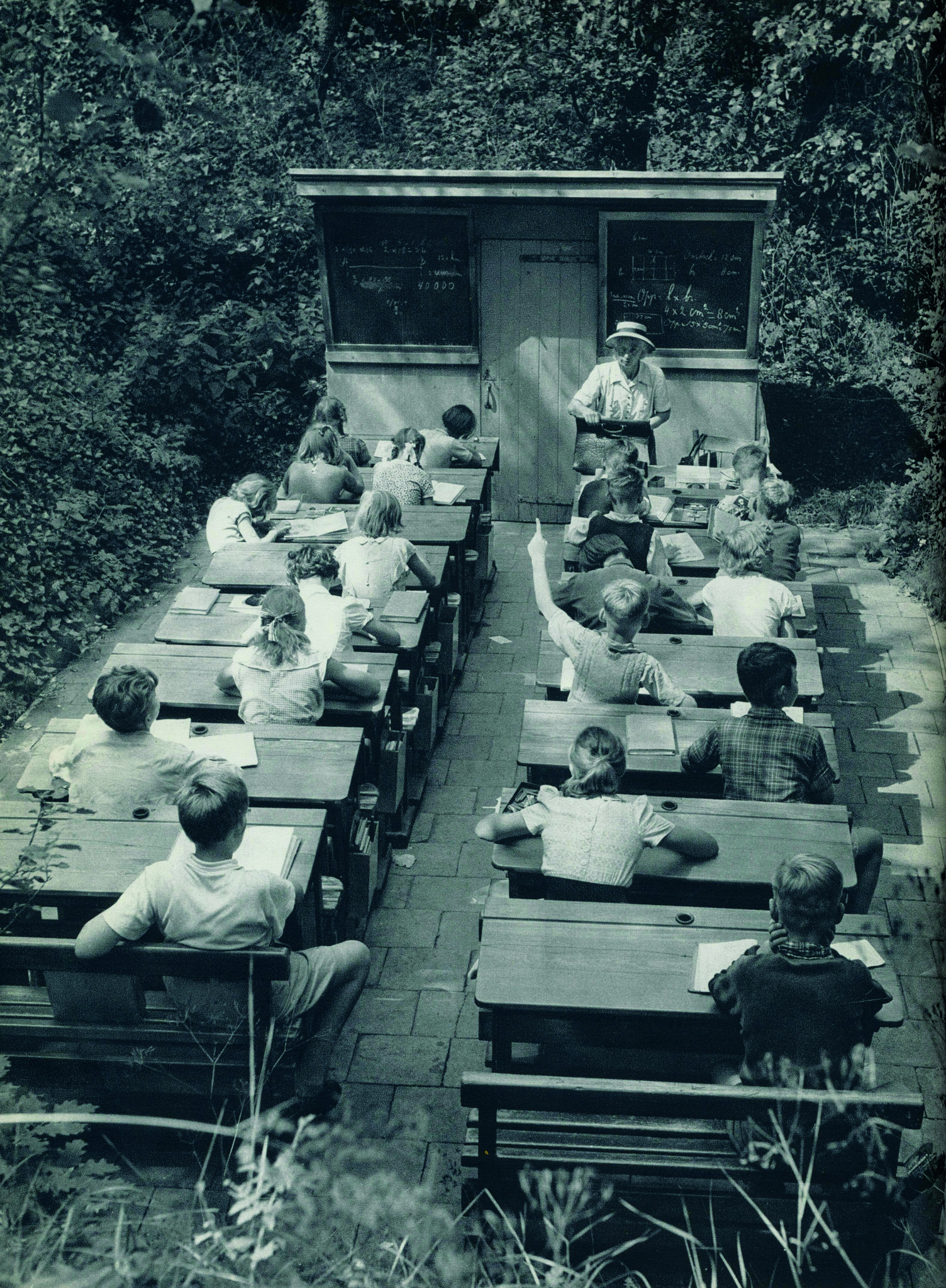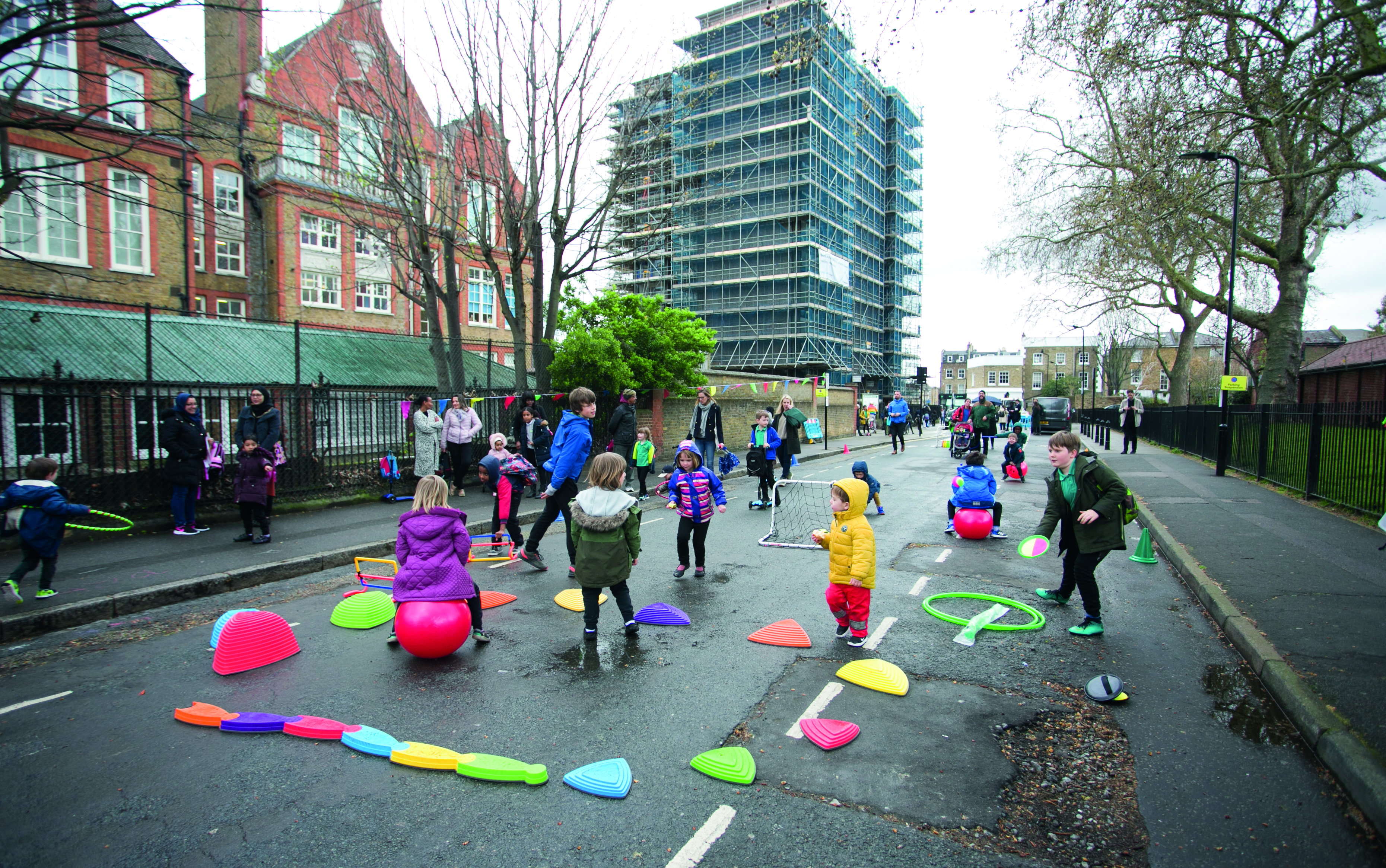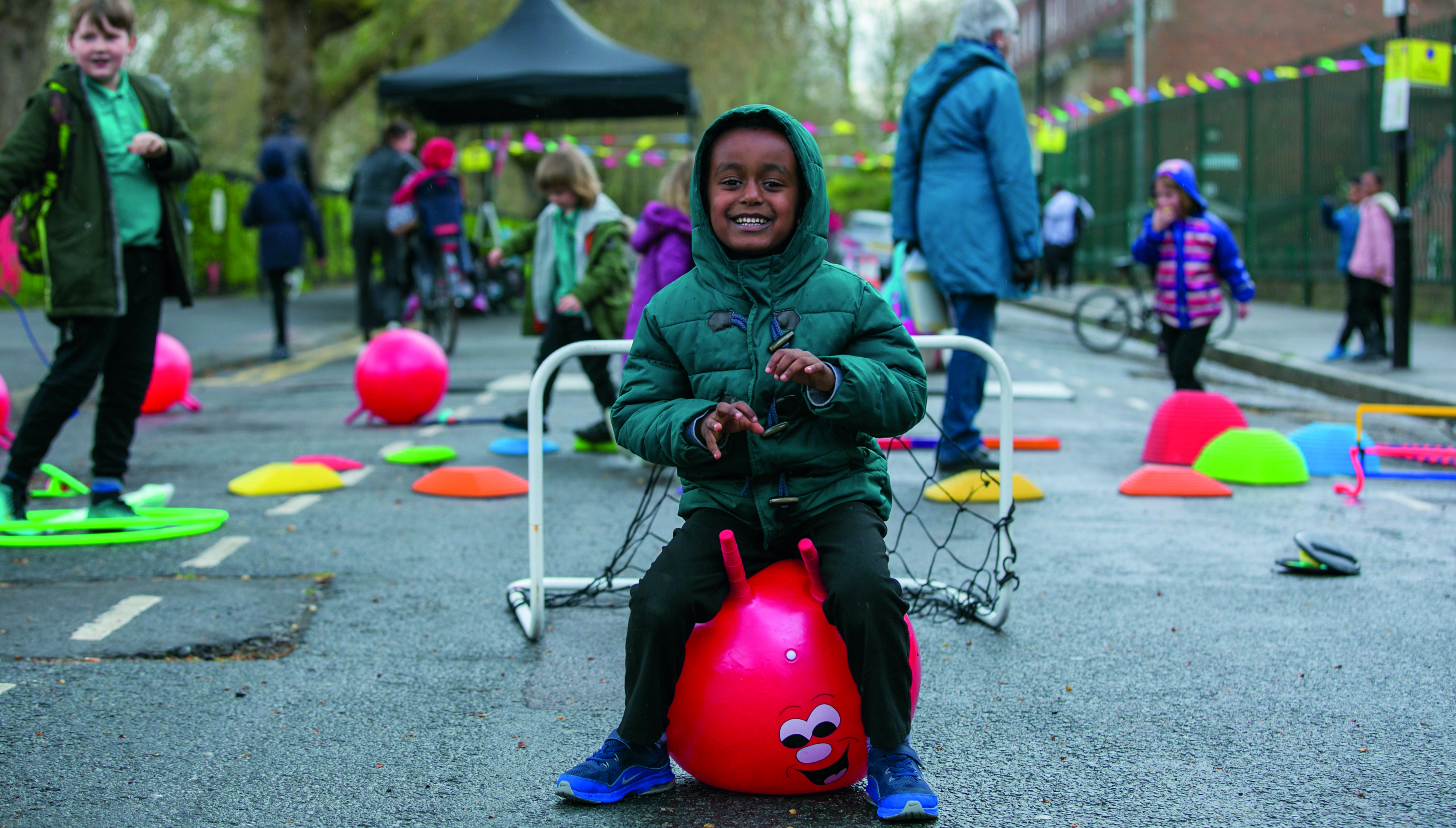
Fresh air, good ventilation and exposure to outdoors were paramount in combating the spread of tuberculosis (TB) in the 19th and early 20th centuries, so much so that by 1937 there were 93 open-air schools across Britain.
The spartan, formal, often freezing outdoor ‘classrooms’ aimed to improve children’s health but were a far cry from the high-quality outdoor provision of today. Yet the health benefits of fresh air, sunlight, good diet and hygiene and physical activity are unequivocal.
Early years consultant Kathryn Solly says, ‘They realised that there was something outside that was more powerful than medicine: the sun and fresh air, which are also critical to Covid-19. Although children have been the least affected by the virus, the evidence remains that the wind and the breeze and the ultraviolet rays of the sun make outside the best possible place for children and adults to be.’
A BRIEF HISTORY
In the lead-up to the Second World War, when TB was rife, many schools in Northern Europe came up with novel ways to teach outdoors. The idea came from the sanatoria that sprang up in the later part of the 19th century, where fresh air and sunshine, as much as medicine, were used to treat TB victims. The first school inspired by these principles started in Berlin in 1904 with the creation of a ‘Forest school for sickly children’.
Three years later, a summer school in Bostall Wood, south-east London became the first summer school to copy this experiment, and the results were so promising that half a dozen permanent schools, some of them residential, soon opened across the country. This was the start of the open-air movement.
These schools were targeted at ‘delicate children’ – it was believed that TB began in childhood and that ‘sickly’ children were more susceptible. Doctors thought that if they could reach these children, particularly those living in the slums of big cities, where the problem was more severe, the disease could be stamped out.
The schools had open shelters for wet weather, where children took their meals, snacks and afternoon nap. Lessons were held in the open air, with an emphasis on nature studies. The success of the schools contributed to their roll-out in 13 cities by 1914.

McMILLAN SISTERS
In 1908, sisters Rachel and Margaret McMillan opened the first ‘School Clinic’ for slum children, and in 1914 they established an open-air school in the garden of Evelyn House, Deptford, where the children lived and slept under canvas.
Ms Solly says, ‘Industrialisation brought people to cities and added elements of disease like TB and cholera because people were living too close together in a small rooms with no ventilation and poor diets and not going outdoors. The McMillan sisters recognised this and many of the schools had bathrooms and pot baths so that the children could be clean.’
The school also had several shelters or pavillions which could hold between 35 and 50 children. These were light timber constructions intended to be modified or replaced easily. Later constructions included a considerable amount of glass and were said to resemble a greenhouse. They also had lean-tos, which many nursery schools have followed ever since, giving children access to both the indoors and outdoors.
In 1928, early years pioneer Dr Susan Isaacs was involved in setting up the Chelsea Open Air Nursery School in London for health, pedagogical and philosophical reasons. To this day, children enjoy free-flow in their play, learning indoors and out.
After the introduction of antibiotics and the improvement of social conditions, open-air schools were gradually phased out post-war.
WATERSHED MOMENT
With the odds of Covid-19 being passed on nearly 19 times greater indoors than when outside in the fresh air, many outdoor education advocates believe there has never been a more opportune time to make this a watershed moment for outdoor education.
Ms Solly says, ‘We have a great once-in-a-lifetime opportunity to broaden horizons, enhance sensory pathways, build movement and whole-body development, enhance physicality and the holistic health needs in our children via a responsive curriculum outdoors.’
Juliet Robertson, author of Messy Maths and Dirty Teaching, points to the growing evidence of the benefits of outdoor learning. ‘Over the last two decades, the rise in literature that says outdoor play and learning is a good thing, and it’s even better in a natural space, is something we have to seize upon,’ she says. ‘But we have to look at what makes the outdoors unique and special – not just for health, but for learning too. And only then can we look at making the learning truly fabulous.’
Cath Prisk, director of social enterprise Outdoor People, which supports children and families to get outdoors every day, says, ‘There’s nothing stopping British schools taking their lessons outside half the day over the winter – except clothes. If they have the right kit, they can have an amazing winter of education outdoors.’
However, lack of the right ethos and facilities coupled with concerns about accountability prevent many schools from adopting a model of education that embraces the outdoors. ‘It’s about evidencing the impact of the outdoors in a language [and] in a way that is visible to the masses who teach and work and to the powers that be that dominate education,’ says Ms Robertson. ‘It will happen, but we are a year or two too early.’
She is confident, however, that things are moving in the right direction. ‘We are working on a project in Dundee, which is going into its third year, and we think we have a model that evidences the impact of the outdoors on children’s engagement and attainment in maths. Early indications show that it is having a 20 per cent improvement on attainment and engagement across the board.’ It is due to be rolled out to six schools in September.
ON THE STREETS


A major barrier to taking learning outdoors in city centre schools is lack of space. However, Hackney City Council in London has come up with a novel way to aid social distancing, make the roads safer for children and improve air quality, by closing roads around primary schools.
To date, ten schools have a School Street. However, the roll-out to 40 new schools in September follows the council’s successful bid for £350,000 from Transport for London’s Streetspace programme. In some cases, streets remain closed after school pick-up for children to play games and parents to hang out.
Cath Prisk, director of Outdoor People, says, ‘With local authority support, schools could look to close the streets around them, to create extra square metres for play and learning. Heads may find it much easier to facilitate this now, compared with pre-lockdown, as the Greater London Authority is already rethinking urban space to prioritise pedestrians and cyclists.’

CASE STUDY: Liberty Woodland
London’s first outdoor primary school, Liberty Woodland School in Worcester Park, opened last September. Children aged four to 11 spend 95 per cent of the day outside.
Owner Leanna Barrett, who established Little Forest Folk – a group of six outdoor nurseries in the capital – hopes schools will see the possibilities of outdoor learning when they return post-lockdown and embrace it, making it a ‘permanent change’ rather than a short-term response to keeping children safe. Ms Barrett, a former civil servant, says, ‘What we’re doing for our primary school is essentially a continuation of the best practice in early years. It’s about play and well-being and high levels of engagement by making their learning fascinating and interesting.’

She adds, ‘We run six nurseries with 280 families and we’ve never had chicken pox spread through the nursery, or headlice. The children are physically stronger and they are in fresh air all the time. All the research says that being outdoors is the safest place to be amid this pandemic.’
MORE INFORMATION
- ‘Defining Moment: The open air movement changes British schools, summer 1907’, https://on.ft.com/38ZALao
- https://bbc.in/3j77DCn
- https://outdoorpeople.org.uk
- www.libertywoodlandschool.com
- https://bit.ly/3etqOmv
- England’s Schools: History, architecture and adaptation by Elain Harwood
- https://bit.ly/3evGO7A
- www.dailymail.co.uk/femail/article-4795438/Photos-Britain-used-FRESH-AIR-halt-TB-crisis.html









